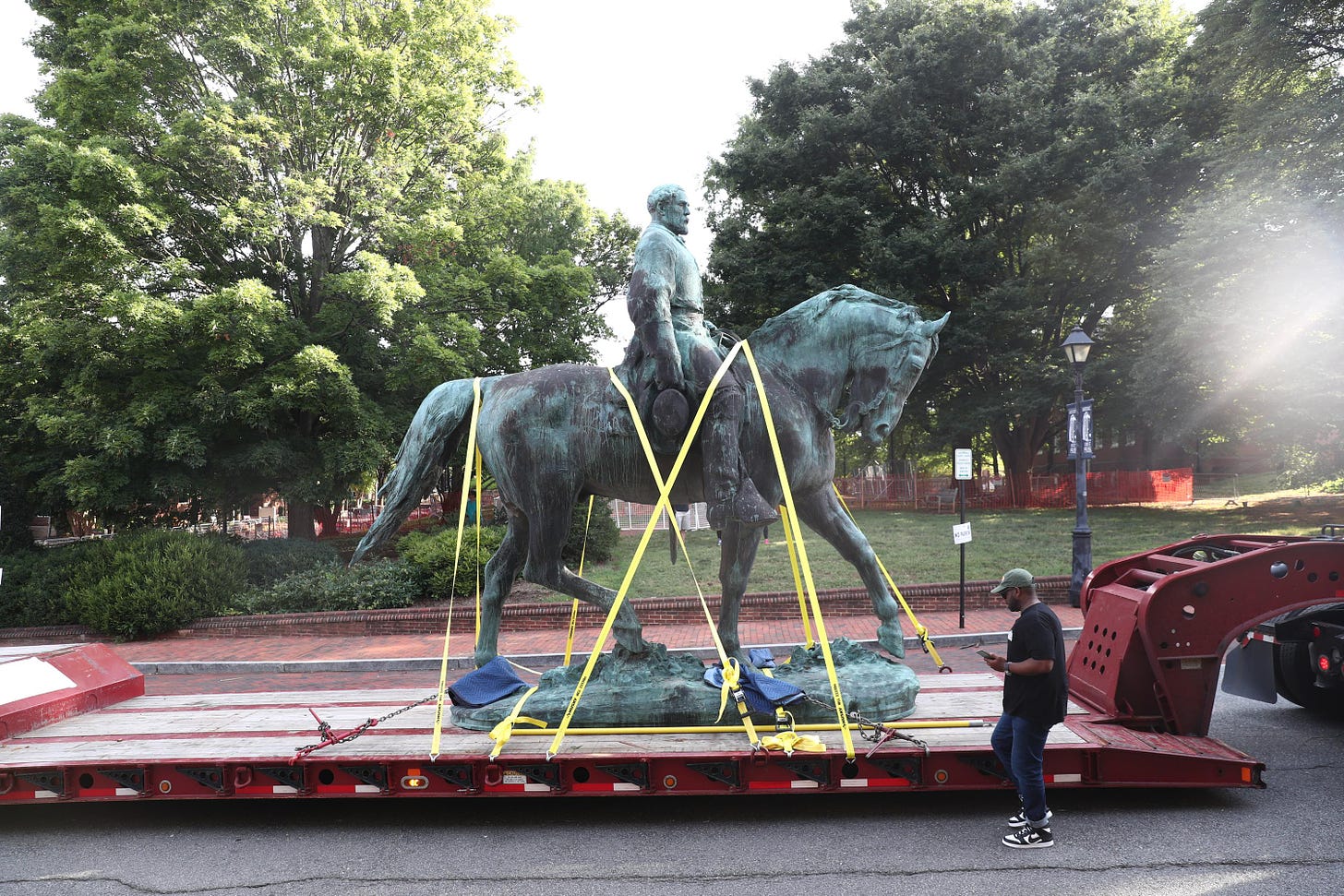I have a special interest in the controversy surrounding the Confederate monuments in Charlottesville, Virginia. As many of you know, I lived and taught high school history in Charlottesville for eleven years from 2000 to 2011. Local Civil War sites, including its monuments, served as an extension of my classroom. I regularly led tours of the Robert E. Lee and Stonewall Jackson monuments downtown and taught my students how to interpret them as a reflection of both history and memory.
I still remember the horror of seeing some of my former students in the crowd during the Unite the Right rally in August 2017, that resulted in the death of Heather Heyer.
From the beginning, I supported the right of the city to decide what to do with its Confederate monuments for the same reasons that I support any city’s right to dedicate monuments that it deems fitting for its public spaces.
Monuments are never guaranteed an indefinite lifespan. Their continued existence depends on whether their presence continues to reflect the values and shared past of the broader community.
One would have thought that the issue had been decided now that the monuments have been removed and handed over to The Jefferson School African American Heritage Center, but lawsuits continue to prevent it from following through with its plans to melt down the Lee statue and transform it into a new piece of public art.
I have worked closely with its executive director, Dr. Andrea Douglas, on a number of occasions. I have delivered presentations on the history of Confederate monuments at the Jefferson School and we even co-led a tour of the city’s monuments for the general public back in 2018.
Dr. Douglas understands the history of these monuments, but more importantly, she appreciates the impact that transforming the Lee monument into a new piece of art will have on the community, especially the local African-American community.
The staff at the Jefferson School have done their due diligence in talking with the community about the best ways to proceed and inquiring as to whether melting the statue is appropriate.
This is not a publicity stunt.
The current lawsuit against the city of Charlottesville was filed by the Trevilian Station Battlefield Foundation and the Ratcliffe Foundation, which manages a local house museum in Russell County, Virginia.
The Ratcliffe Foundation petitioned the city of Richmond to relocate some of its Confederate monuments to their site. There is no evidence that either of these organizations is committed- or has the resources to properly interpret Confederate monuments.
The last thing we need is for these monuments to be relocated without any understanding of their history and why they were removed in the first place.
I don’t believe that all Confederate monuments need to be destroyed or melted down. My hope is that some of them can be relocated to more appropriate places such as cemeteries, museums, and other public exhibits.
But as I have long maintained, that is up to each community to decide.
Charlottesville is a unique place owing to the violent white supremacist rally that took place in the summer of 2017—an event that was publicized as a defense of Confederate monuments and the Confederacy’s legacy of racism and slavery.
The plaintiffs in this case need to acknowledge that any defense of these monuments cannot entirely be separated from the memory of that violent day and the death of Heather Heyer.
Regardless of your view of these monuments and whether you believe the melting down of the Lee statue is the right course, it is much more important to allow the city to begin to heal.





"There are but two parties now, Traitors & Patriots and I want hereafter to be ranked with the latter." --- Ulysses S. Grant, Apr. 1861. Keeping in mind what these monuments represent, they should be kept in Confederate museums. I'm being generous.
Your comment that Lee looks constipated on Traveler made me chuckle. I think Lee looks defeated, hat in hand and eyes looking downward. It would be interesting to know what Shrady was wanting to convey. Regardless, I agree with melting down this statue. Monuments and statues are to honor and memorialize those for whom they’re made. So many Confederate statues were made during Jim Crow, then later rationalized via reconciliation. Lee was, and always will be on, as Frederick Douglass said, “the wrong side,” and, “it is no part of our duty to confound right with wrong.”